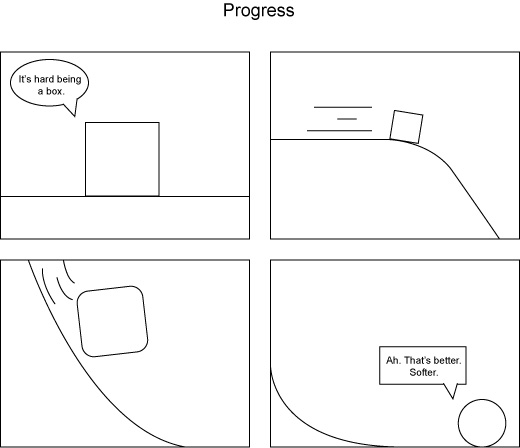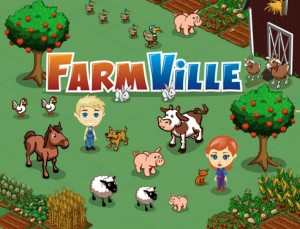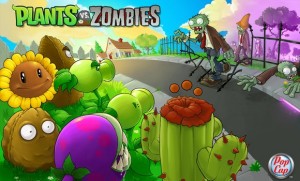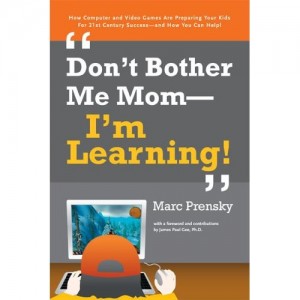
by Annie | Jul 29, 2010 | Game Design
Everyone who knows me knows that I love ketchup. I put it on everything from eggs to sloppy joes, and, occasionally, corn as well. Ketchup can spice up just about anything. And as I found out today during my level design class, so can SketchUp. For those of you who haven’t yet heard of SketchUp, it’s not quite a condiment. SketchUp is Google’s 3D modeling software, and like most other Google-produced tools, it’s quite powerful. Within seconds, you can turn a rectangle into a box and a box into a house with windows and doors. Need a 3D car? No problem. Just create a few boxes and modify the edges. Then add a few cylindrical wheels, and you’ll soon be zooming along. While SketchUp doesn’t allow you to walk around in an environment, the tool is perfect for level design. The shapes, edges, and vertices are all so easy to manipulate, making virtual architecture a snap. Within the next couple of weeks, I will be creating a level in SketchUp, complete with 3D architecture, characters, and obstacles, so stay tuned! In the meantime, here’s a quick look at what you can do with...
by Annie | Jul 28, 2010 | Game Design
There’s no doubt that games will effect change on a global scale and fundamentally transform the way we learn. The question, though, is how. And when. I’ve seen games in which players explore the human body from the inside, games that change players’ nutrition and exercise habits, and games that challenge players to minimize dependence on oil. Games can be fun and serious at the same time. Here’s a closer look at serious games and their potential. Now, seriously, go play some...

by Annie | Jul 27, 2010 | Game Design
Just this week, I’ve written 4 papers, taken 1 midterm, created a detailed perspective drawing, and analyzed numerous games and movie scenes. And this is supposed to be the “easy” term. Now into the 4th week of my first term, I can honestly say that I still love it. I leave the house at 8am each morning and usually get home after 10pm, but most days I end the day with more energy than I have at the beginning of the day. I’ve heard that a year at VFS should be viewed less as school and more as industry experience – an extended interview, if you will. All the assignments are designed to hone specific skills and lead to specific goals. Not one assignment thus far has made me feel like I was wasting my time. Here’s an in-class assignment I did today in my visual storytelling class in which we were discussing visual communication through comics. This comic was created in under 15 minutes, and I think it essentially sums up my expectations for my experience at VFS within the next several months: start out clunky and intimidated, go through several bumps, gain a few bruises, and come out sleek and molded, ready for the next...

by Annie | Jul 26, 2010 | Game Design
Spending your extra money to buy pink tractors and virtual chickens? You’re not alone. Zynga, the social games giant that created FarmVille and Mafia Wars, has over 200 million players a month, giving it a broader audience than its rival Electronic Arts. Zynga’s expansion has been largely due to the growth of social games and micro-purchases on Facebook. In fact, 20-30% of Facebook traffic is now driven by games. So before you scoff at virtual harvesting, take a minute to think about what makes such games so popular and why Zynga might become the Google of the game...

by Annie | Jul 22, 2010 | Game Design
Like vampires, zombies have mystified the masses for ages. But who knew that you could fight off zombies with pea-shooters, mushrooms, and other veggies? Plants vs. Zombies, released in 2009 by PopCap Games, has been a huge hit for casual and hardcore gamers alike. Even my mom loves it, laughing in delight as the zombies’ heads pop off. But why? What contributes to the game’s broad appeal? Here are a few conjectures: 1. Approachable theme Enhanced by well-polished graphics, the theme of the game is approachable by audiences of various ages and backgrounds. Using veggies as weapons provides a new twist for hardcore gamers and a familiar topic for younger audiences. 2. Simple mechanics A tower defense-style game of sorts, Plants vs. Zombies doesn’t require players to manipulate a variety of buttons to engage in actual combat with the zombies. Instead, players choose strategic placements for their plants with the click of a button, watching the battlefield from above and reinforcing their defenses when necessary. 3. Universal concept Everyone is familiar with the exchange of money and goods. Even toddlers understand that people must acquire money, then choose how and when to spend it. Preying on this universal concept, Plants vs. Zombies provides a new medium with which to earn and spend currency. Players must earn sun power to plant more veggies in order to defend their house from zombies. And who wouldn’t want to do that? So if you haven’t already, you should definitely consider taking on the role of veggie commander, defending your house and brains against the approaching wrath and hunger of the zombie...

by Annie | Jul 20, 2010 | Game Design
Imagine you’re a parent (this is less of a stretch for those of you who already have children). Your child is growing up in a world in which people use cell phones to check email and rely on GPS narration to guide them through unfamiliar territory. And of course, the ubiquity of computer and video games is unavoidable. So, do you let your kids play them? Let’s face it. The game industry is growing. Computer and video games are published every day. Story lines are becoming more complicated, and gameplay mechanics are changing. Often, toddlers as young as 2 years old play computer games or iPhone games on a regular basis. Isn’t this harmful? According to Marc Prensky, the contrary is true. Kids can actually learn more positive and useful things from computer and video games than from school, depending on how teachers and parents moderate kids’ gameplay experiences. Think about how much attention and energy kids devote to computer and video games. Now compare that to the attention and energy they put forth in the classroom. I can assure you that there are as many kids catching Z’s in the classroom as there were back in the “old days” before classrooms had interactive white boards and computers. But why? What’s the draw of video games? For one, kids, just like adults, love challenges. Give a kid an overly easy assignment, and you’ll catch them throwing paper airplanes soon after, counting down the minutes until recess. Give a kid a challenging assignment with the proper tools and scaffolding to help them complete it, and you get a focused and...






